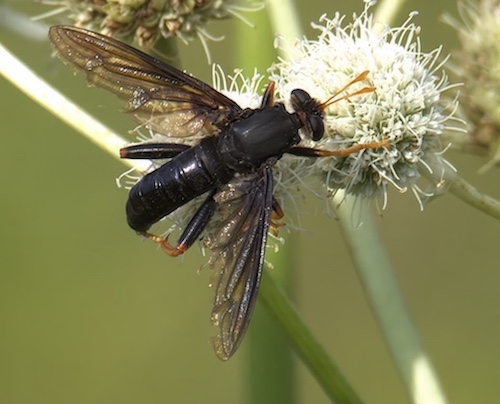
As the “dog days” of a long, hot summer settle upon us, my hikes in the woods and prairies of our local preserves take on a slightly different emphasis.
The season for birds migrating through our area to the north is long past and the start of their return south is still a few weeks away for most species. While I’m still looking for, and finding, many types of birds that spend the summer in our area, the season dictates that I widen my focus to take the kinds of colorful photographs that I enjoy.
At this time of the year, I find myself hiking in the local prairies as many of the native prairie wildflowers are in full bloom and the interesting and beautiful pollinators that service the flowers are extremely active.
Functional Beauty
The wide variety of beautiful prairie plants provide a riotous palette of colorful blossoms to contrast with the rich shades of green of their foliage. The blooming plants attract not only the attention of us human nature lovers, but also the attention of some of the most important creatures that inhabit our planet: pollinators. Pollinators are made up of many different members of the animal kingdom. For this month, I am concentrating on two specific types of insect pollinators: one a butterfly (the Viceroy) and the other, a fly (the Golden Legged Mydas Fly)! These insects are unique in that they employ two different types of mimicry of other species to fool potential predators to survive.
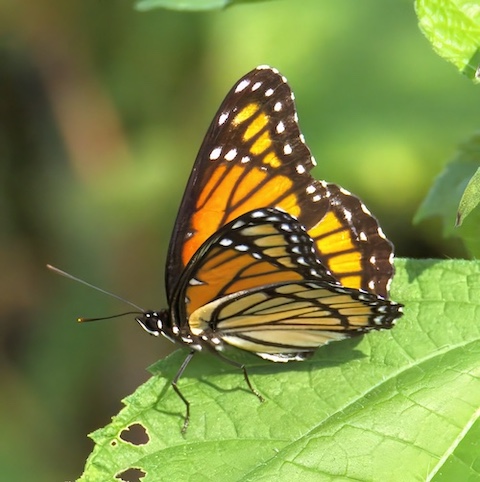

Meet the Mullerian Mimicry Players
The Viceroy closely resembles the Monarch butterfly which is toxic to birds and other predators that might attempt to eat them. The Monarchs accumulate poisons in their system they acquire from milkweed plants that they eat as caterpillars. These poisons, known as cardenolides or cardiac glycosides are particularly toxic to birds. As often happens in nature, animals that are dangerous or toxic to others have bright colors to advertise the fact that they shouldn’t be eaten. In the Monarch’s case, their bright orange and black contrasting colors act as an almost neon warning sign that say ”Danger, I’m toxic to you!”

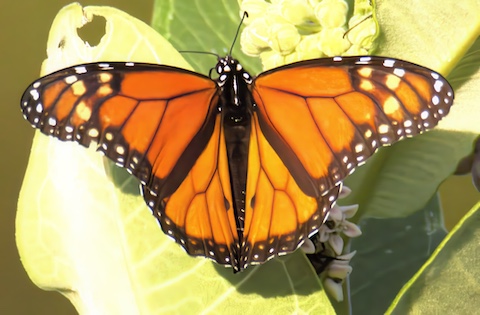
The Viceroy has a color pattern and overall look that is almost identical to that of the Monarch. Viceroys are slightly smaller and have an additional black stripe that runs diagonally across the bottom of their hind wings that Monarchs don’t have. One thing that Viceroys don’t have that Monarchs do is the same toxin in their systems that is dangerous to potential predators. Viceroy caterpillars don’t feed on milkweed plants as they prefer willow leaves. The willow leaves contain a chemical called salicin which is related to the active ingredient in aspirin. If you have ever chewed on an aspirin, you’ve tasted that bitter taste that is quite unpalatable. Birds and other predators that make the mistake of eating a Viceroy are faced with that same taste and unpalatability. While not as toxic as the chemicals accumulated in the body of a Monarch butterfly, it nevertheless causes the Viceroy to be avoided by most predators. The colors and look shared by the Monarch and Viceroy butterflies are an example of Mullerian mimicry. Mullerian mimicry is named after Fritz Muller, a German naturalist who first proposed the concept in 1878. Mullerian mimicry occurs when two different species that are toxic or unpalatable share a similar color scheme to warn off predators.
Meet the Batesian Players
Batesian mimicry (named after Henry Walter Bates, an English naturalist who first proposed the concept in the mid-19th century) occurs when an otherwise harmless or tasty species mimics the appearance of a species that is toxic or otherwise dangerous to potential predators. An example of Batesian mimicry that I encountered on one of my recent hikes is the Golden Legged Mydas Fly. This fly has evolved to mimic the appearance of stinging wasps that are dangerous for potential predators to tangle with. As I was walking through the prairie at Hoover Forest Preserve, I saw what I thought was a group of Great Black Digger Wasps nectaring on the blossoms of a Rattlesnake Master plant a short distance off the trail. I aimed my camera at the “wasps” and took several photographs. When I returned home and processed my pictures on my computer, I discovered that these insects weren’t wasps at all but were one of the largest species of fly in North America: the Golden Legged Mydas Fly. These flies are totally harmless and do not bite. In fact, they are beneficial as they not only serve as pollinators but their larval stage feed on harmful grubs in the soil.
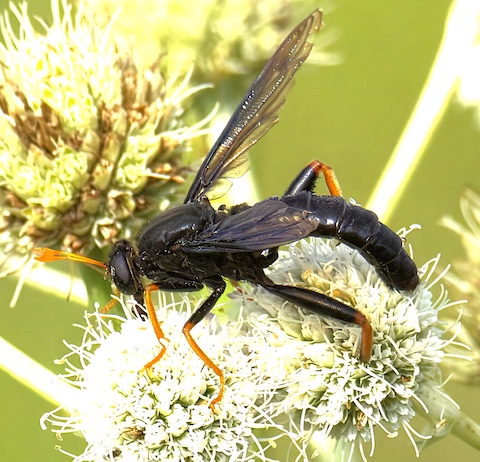
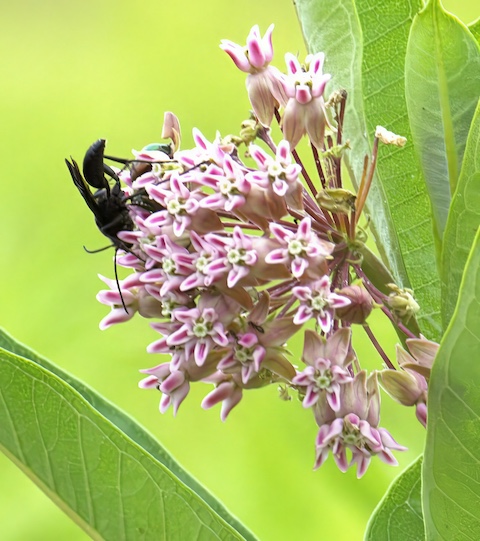
The Batesian mimicry originally fooled me into thinking that the harmless flies were insects with a potentially painful sting. That same mimicry works to provide a measure of defense against potential predators too. A bird would probably rather be safe than sorry and seek out what might be easier prey instead of potentially tangling with what might turn out to be a stinging insect that could hurt them. Nature is amazing not only in its aesthetic beauty but also in its complex design.
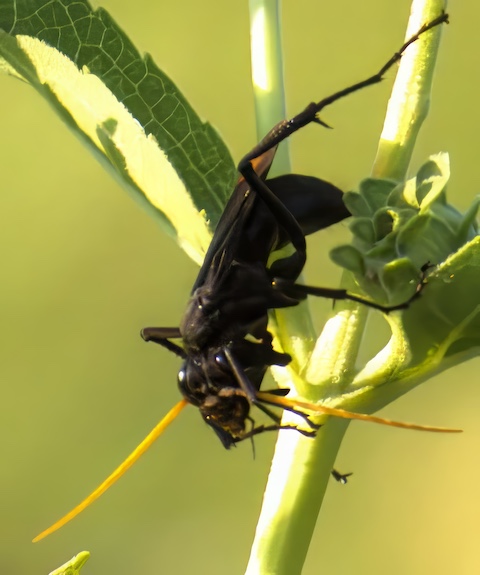
Next time you’re out enjoying the great outdoors in our beautiful watershed, “slow your roll” and keep an eye out for nature’s masters of disguise and subterfuge. They are fascinating and beautiful in their own way! Until next month, Keep On Fixin’ the Fox!

